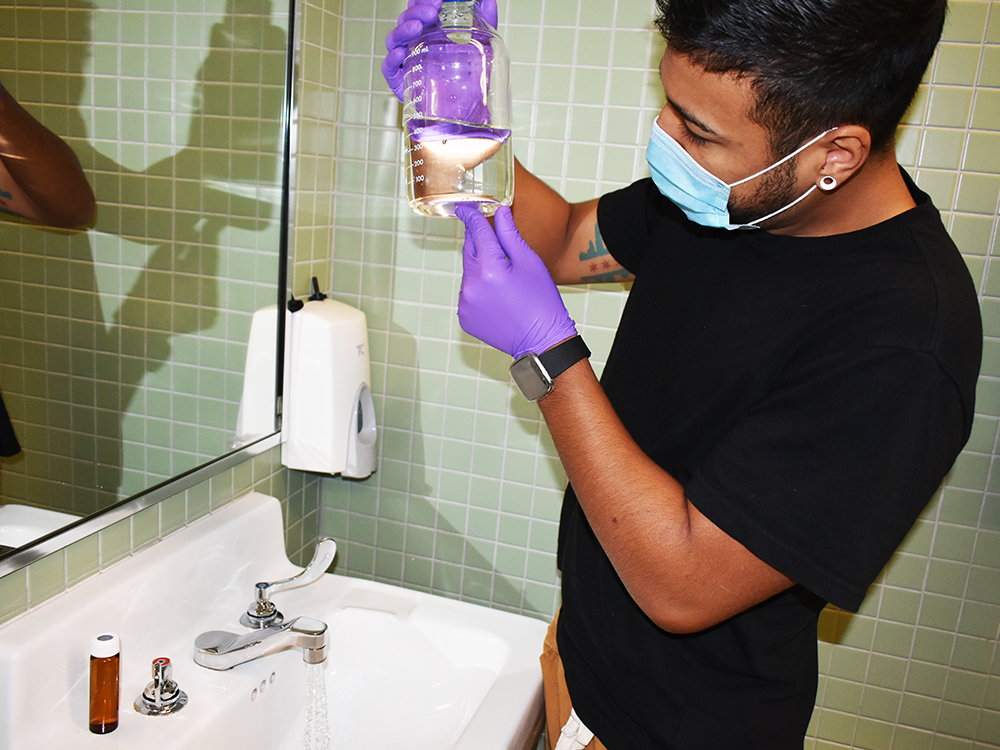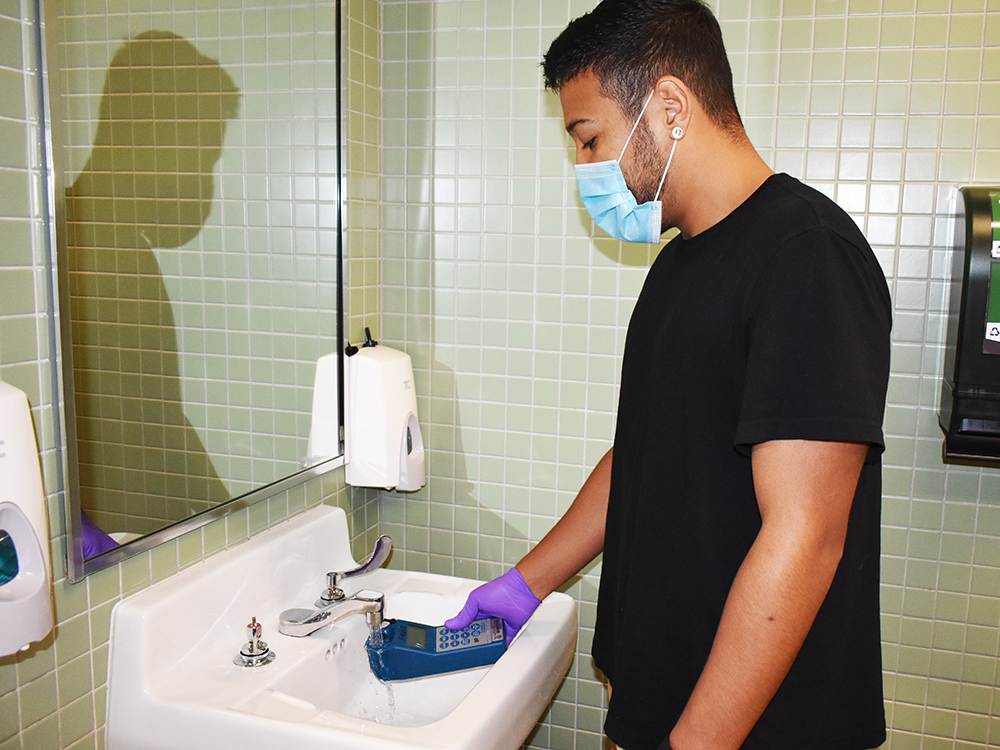In the pre-pandemic world, peak water usage times were fairly predictable. Office buildings, manufacturing facilities and other commercial uses were busy during the day but quiet on weekends. Residential areas saw peaks in the early morning and evening.
But the novel coronavirus pandemic has thrown these patterns into disarray. And when it comes to water use, this can have a major impact for utilities and water quality.
"Our infrastructure systems are operated and designed with the assumption of certain use profiles, but now we have essentially made every weekday a weekend in terms of behavior, with minimal day-to-day consistency," said Kasey Faust, an assistant professor in the Cockrell School of Engineering's Department of Civil Architectural and Environmental Engineering (CAEE). "We've never had this abrupt of a behavioral shift that has gone on this long."
That's why Faust and a group of CAEE researchers are looking into water usage changes as a result of the pandemic and the impacts on utilities. When everyone began working and learning from home, water use dropped significantly in certain locations. As restaurants, schools and other businesses reopened, usage started to increase. But the patterns were different. Huge office buildings remained empty, while residential areas continued to see increases.
These changes on their own aren't a problem. Issues arise when utilities can't recognize them or adjust.
Utilities need to adjust to avoid stagnant water, which can lead to public health hazards and degraded water quality. The researchers are in the process of chronicling these shifts, using the city of Austin and The University of Texas at Austin campus as testing grounds.
They are developing a model that aims to help predict changes in flows and water quality and allow utilities to quickly adjust to new habits. Large water utilities in big cities like Austin are mostly on top of these trends already, Faust said, but some rural areas with more resource-constrained utilities don’t have the resources to handle such an unprecedented shift in water use.


"They don't always have the means to be proactive, to know they should even be looking for this or what to look for,” Faust said of smaller utilities. "If we can tell them to keep an eye on this, it reduces the burden on them."
Faust is part of a team of five faculty members from CAEE leading the research – including Lynn Katz, Kerry Kinney, Lina Sela, and Mary Jo Kirisits – with Jessica Kaminsky from the University of Washington and seven graduate students.
The team is developing recommendations for utilities to integrate large-scale behavioral changes from pandemics like this one into their emergency plans. They have distributed some initial findings to partner utilities and have a paper under review. The predictive model could be available later this semester.
As part of the project, the team has talked to personnel at 28 utilities across the country. They found that the onset of COVID has exacerbated many of the problems they already faced. But it has created new challenges as well, including supply chain issues from countries shutting down manufacturing work, personal protective equipment shortages for workers, difficult questions about how to safely continue construction and financial problems due to an uptick of unpaid bills.
Faust's research primarily focuses on the societal impact of infrastructure. Specifically, she looks at what happens to utility systems when cities experience rapid changes, such as a mass refugee migration or rapid decline in population. This time, though, the story isn't about population change. It's about an unprecedented shift in the day-to-day behavior across an entire nation.
This research represents one of the fastest-moving projects Faust has ever worked on. The pandemic has accelerated research around the globe, and engineers and scientists from all different disciplines are chipping in to try and solve the problem.
"I've never been able to collect data so fast," Faust said. "I've never seen anything turn around this fast. This is like light speed."







